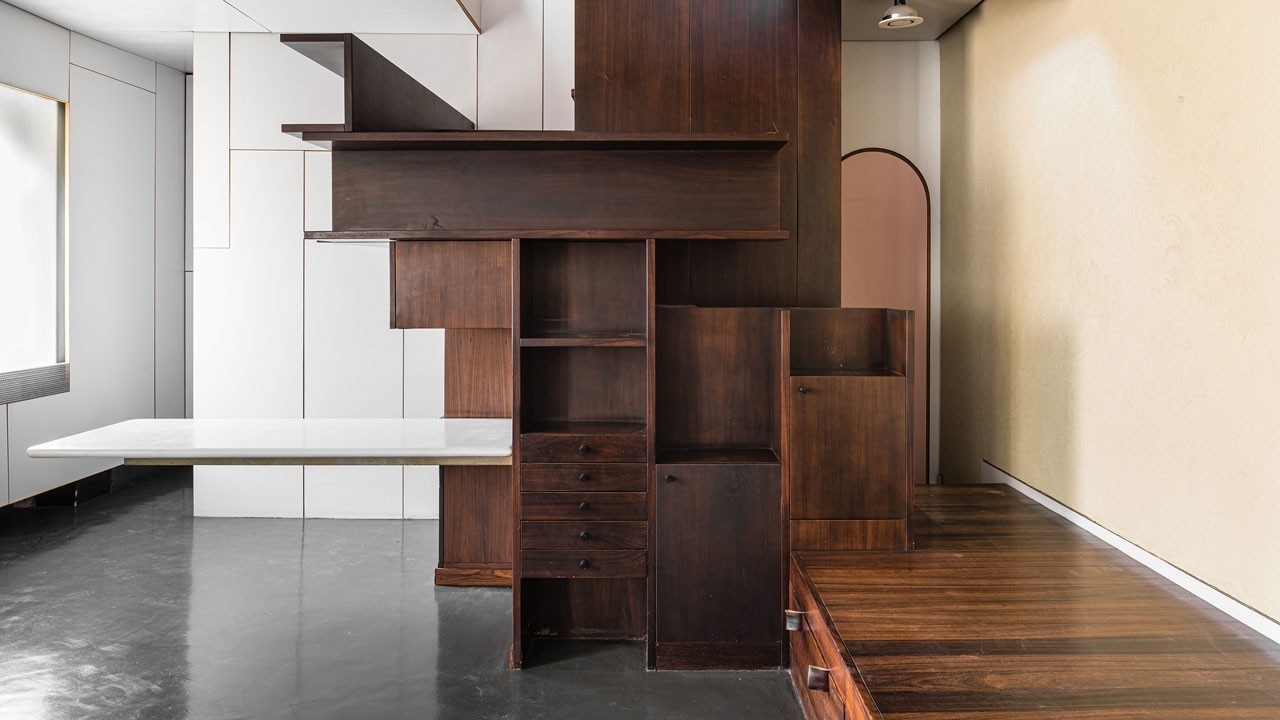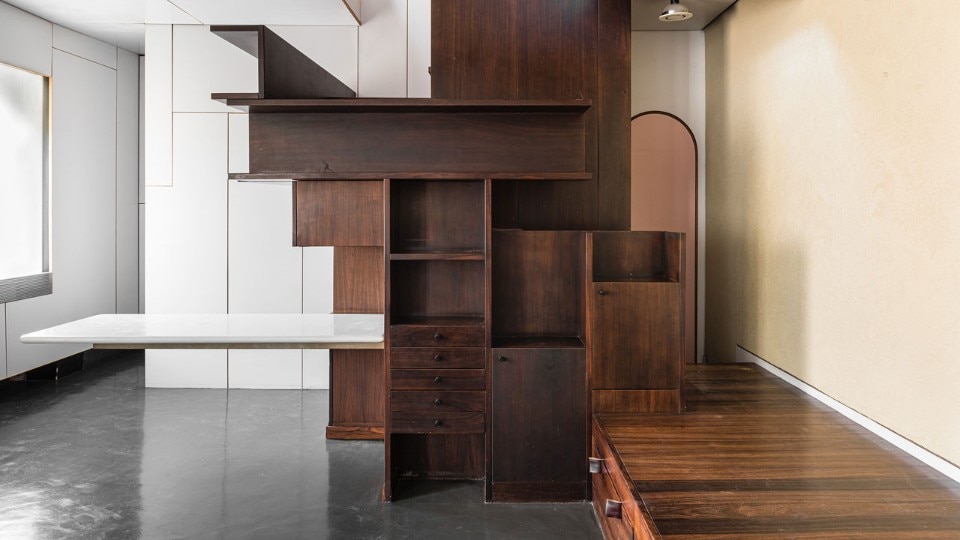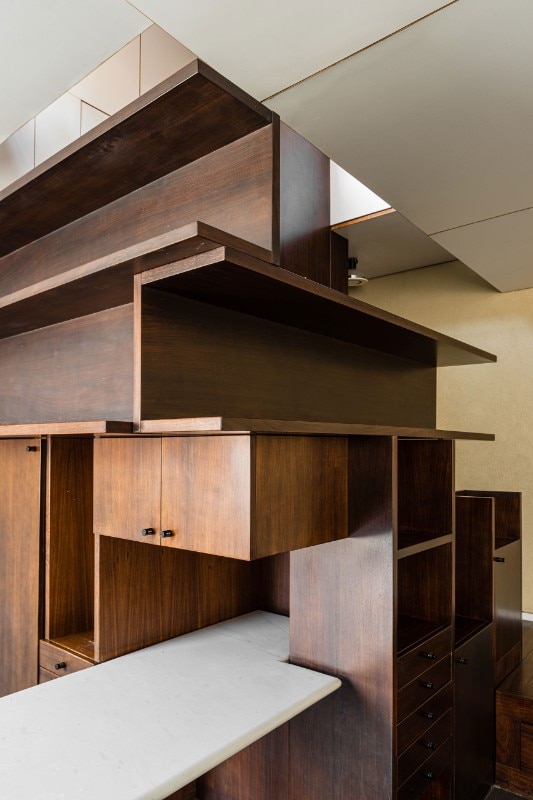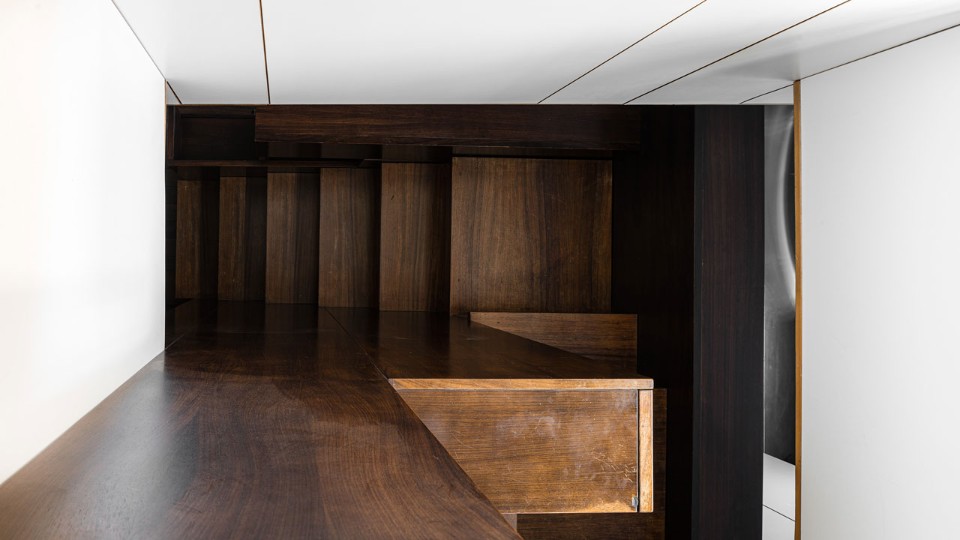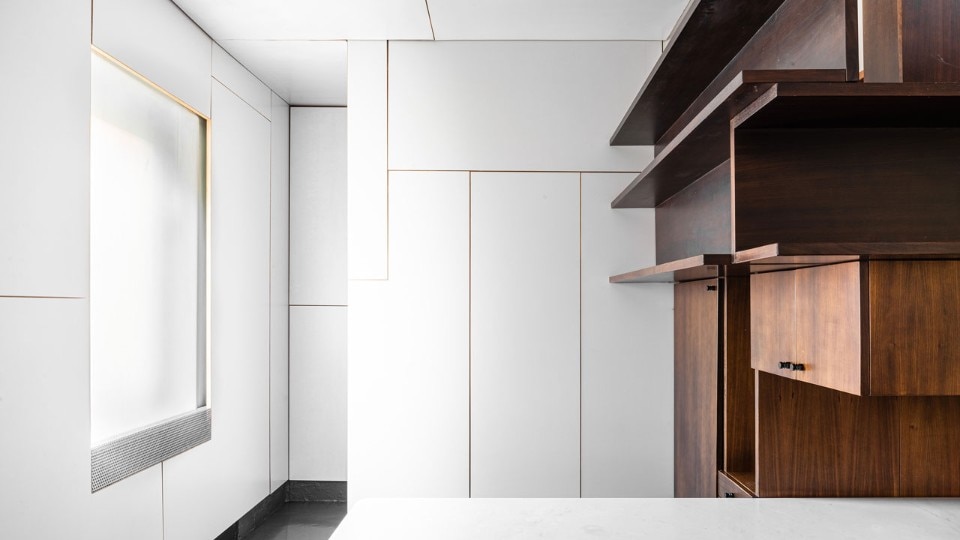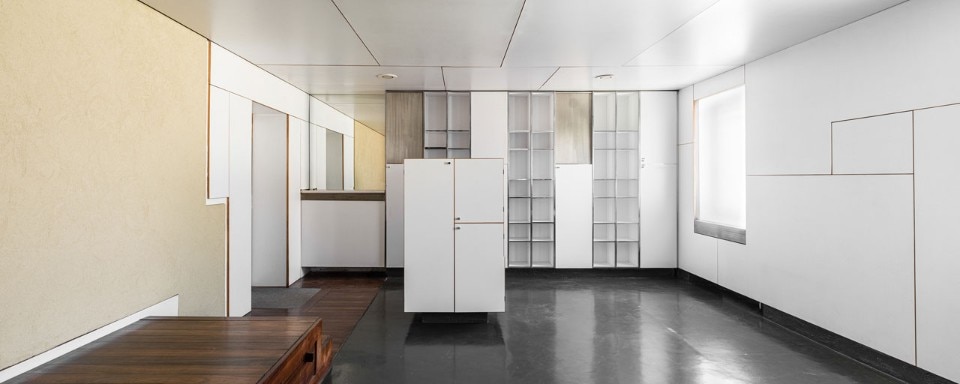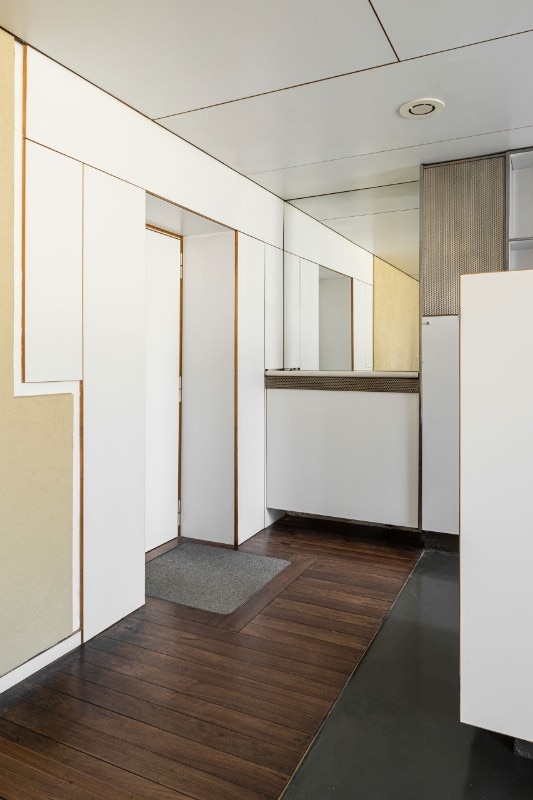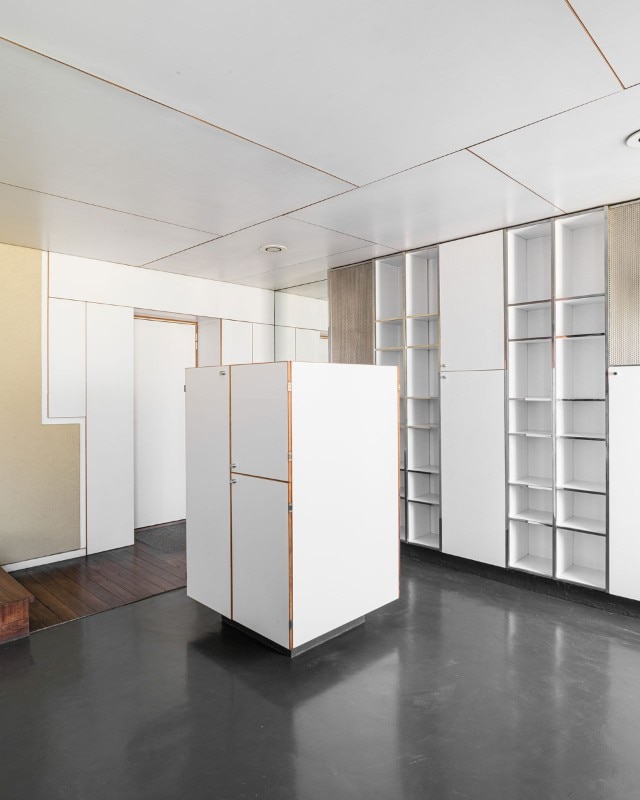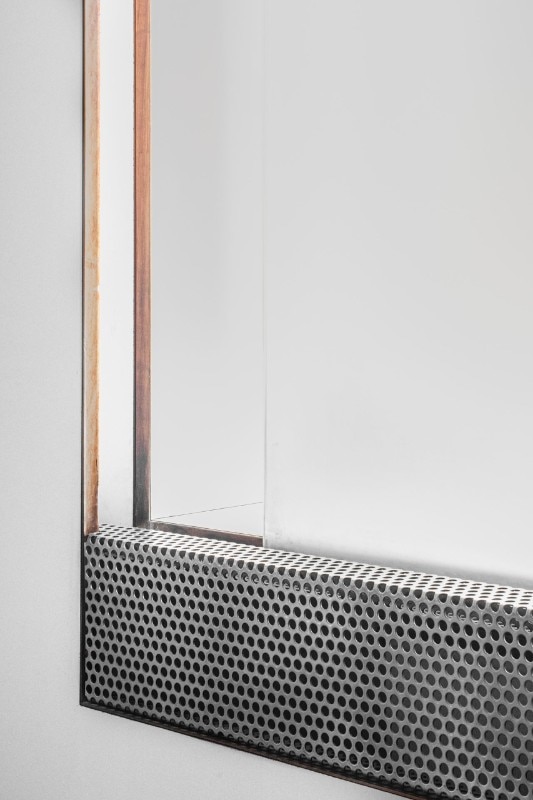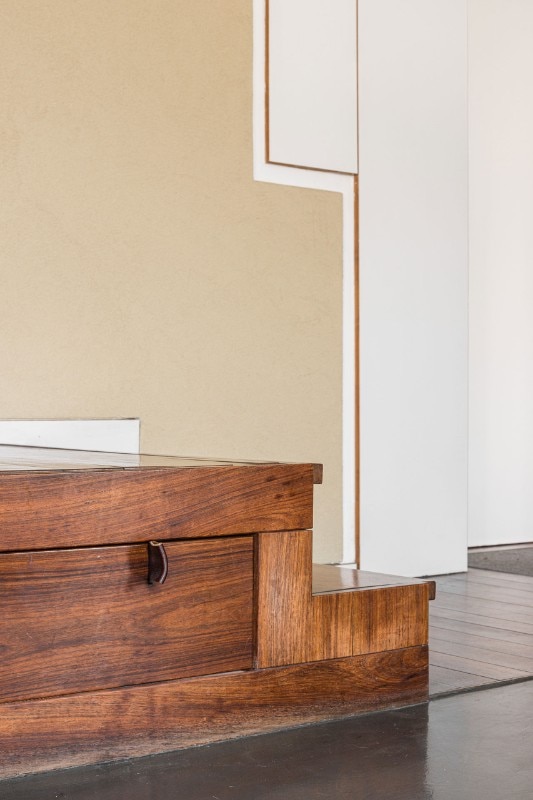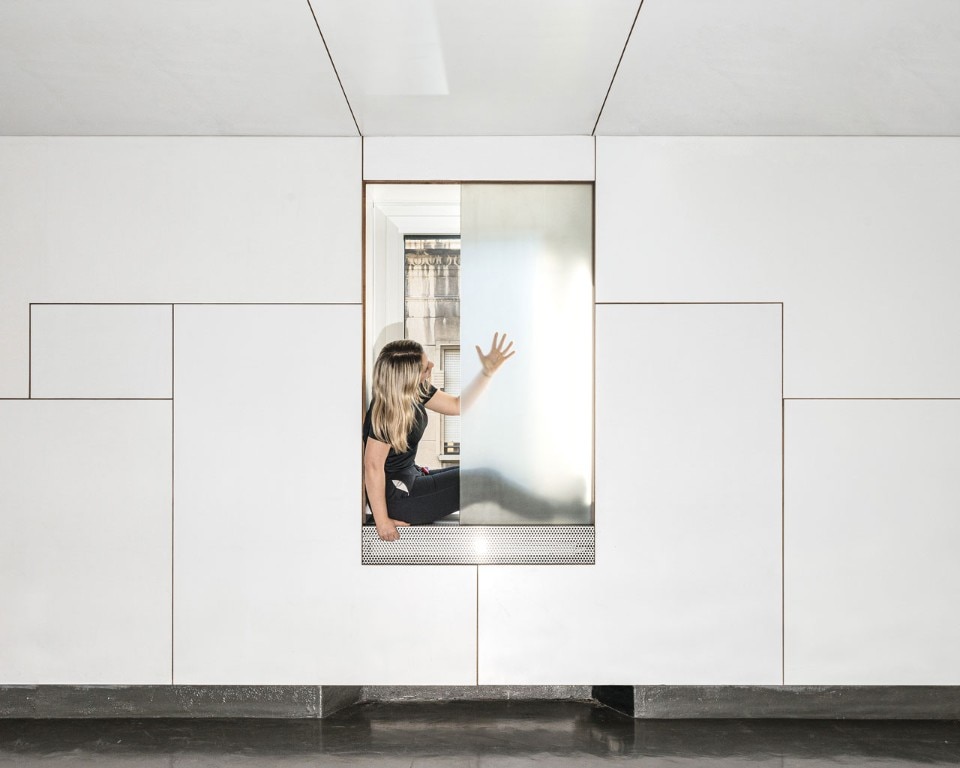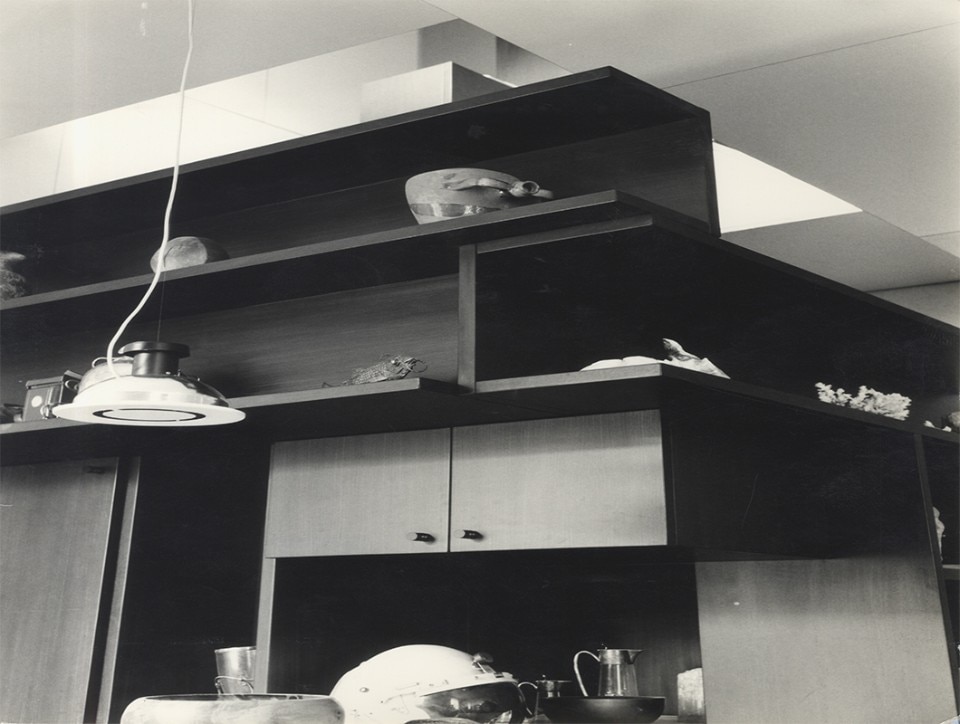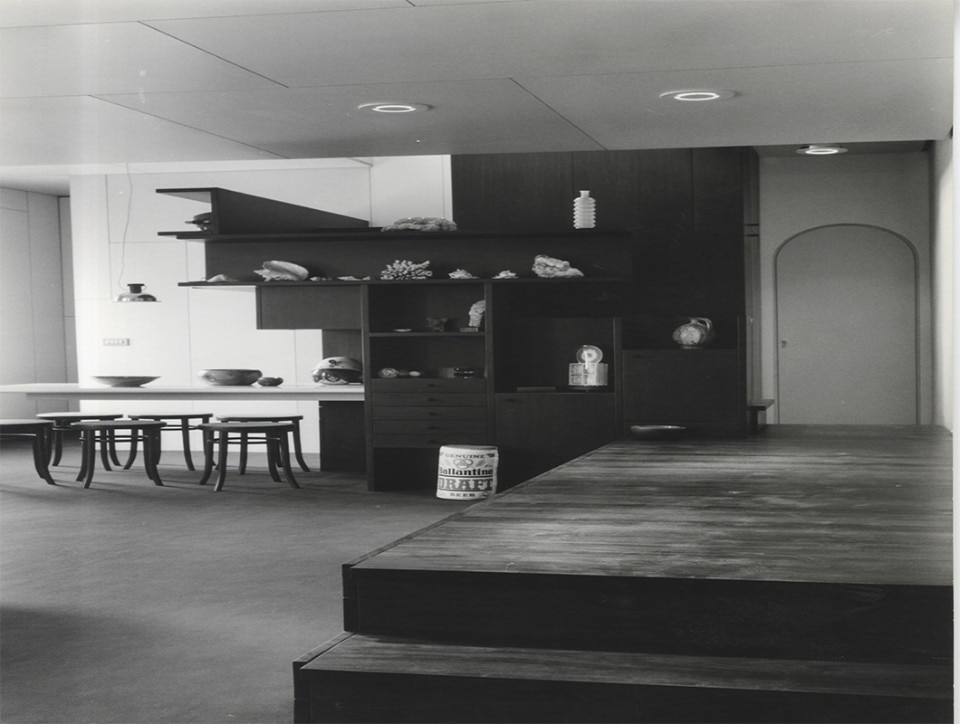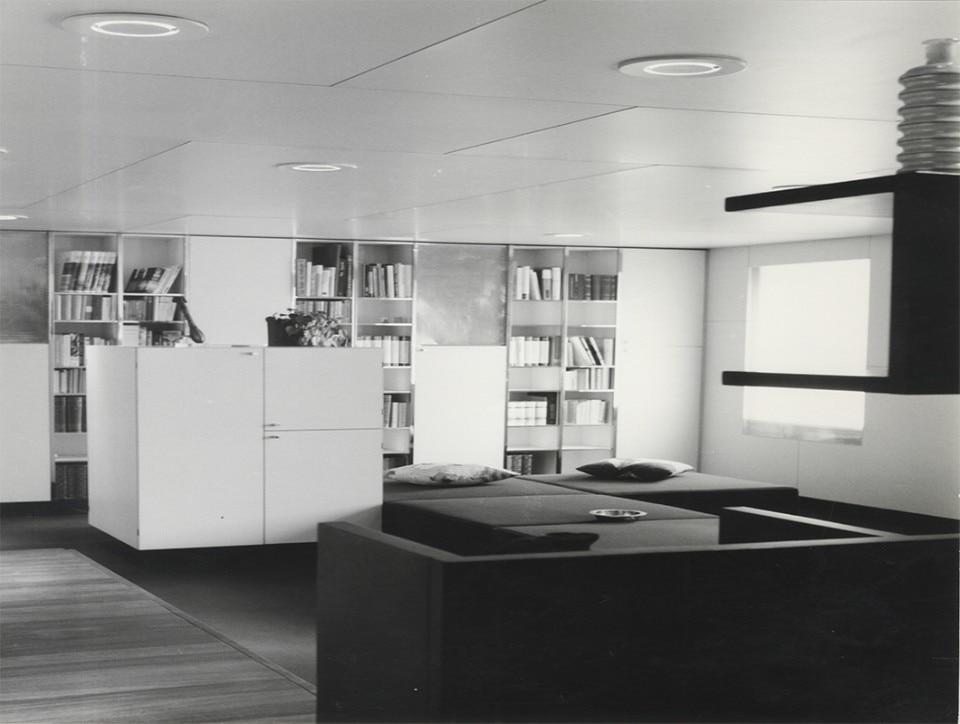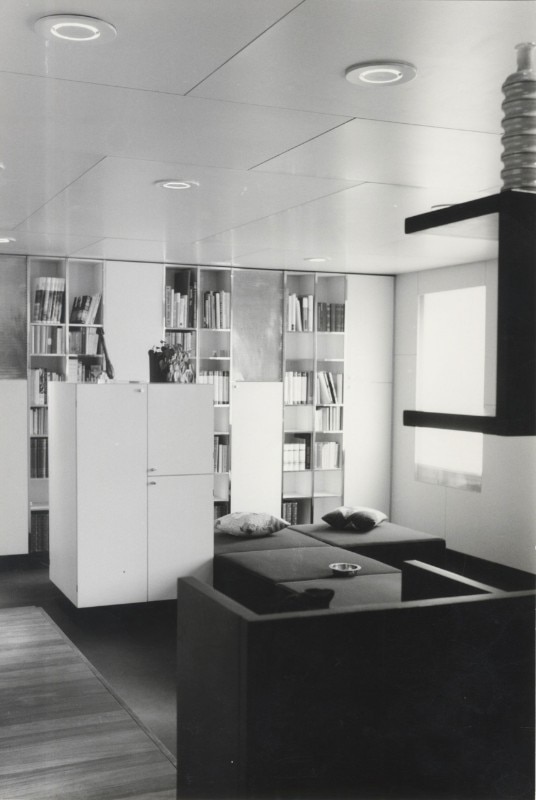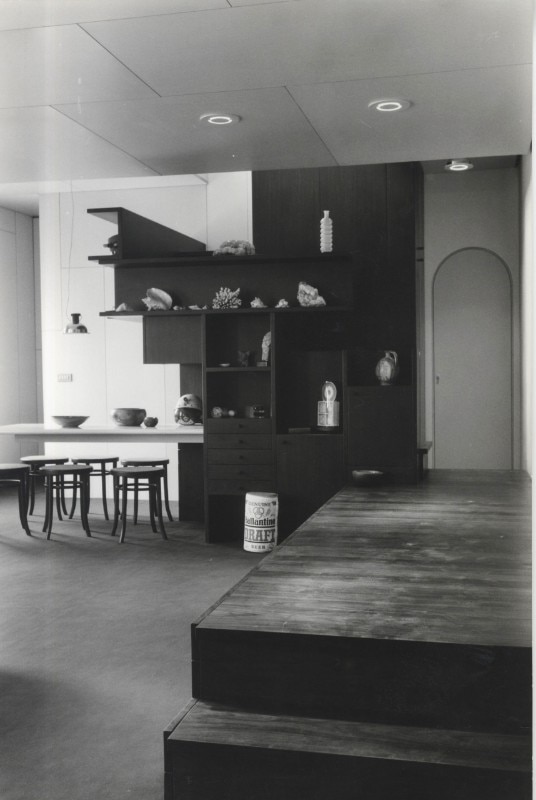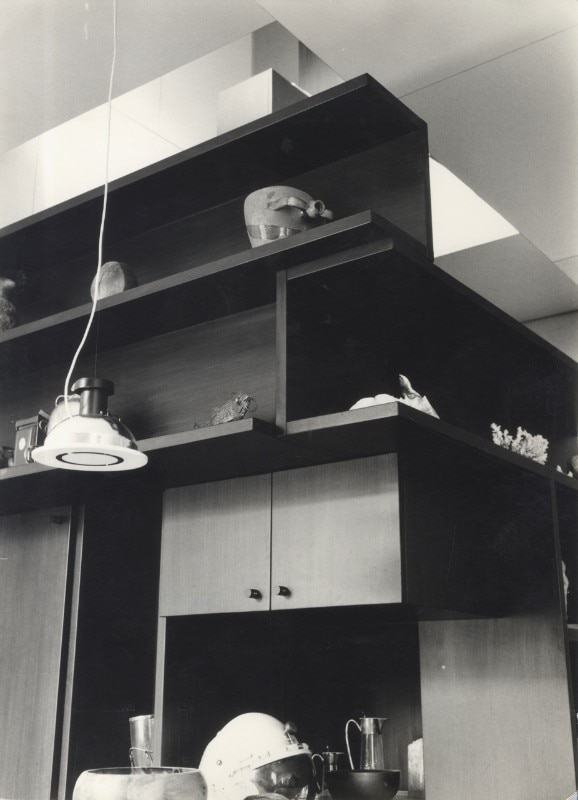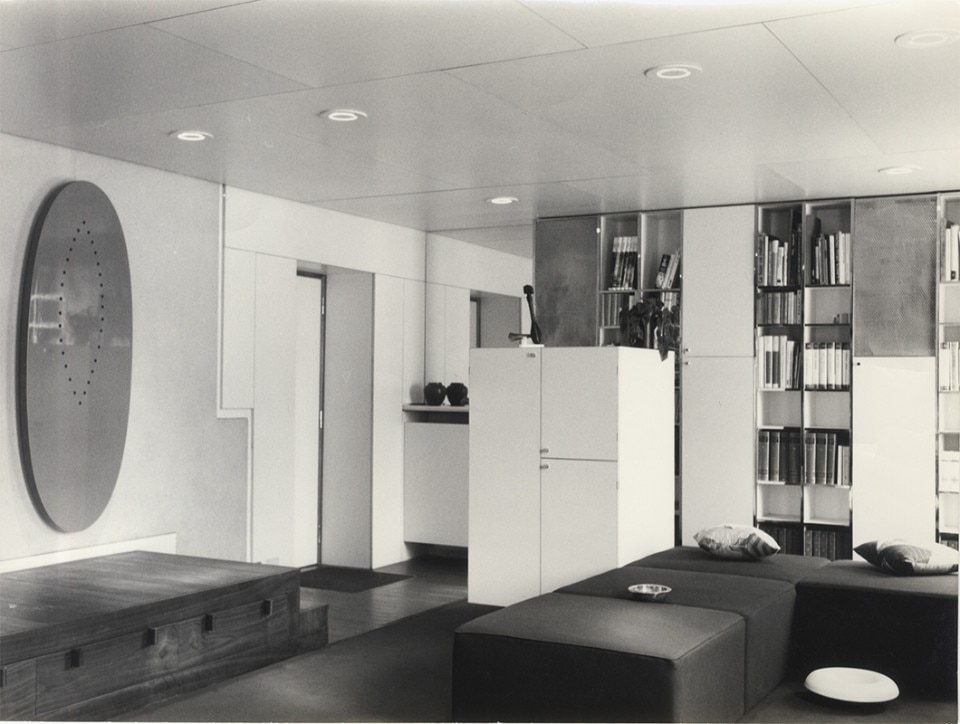It’s 1968. We are in Milan, in the Crocetta area, on the top floor of an “old building, almost a council house”[1]. Here the sculptor Arnaldo Pomodoro, after having achieved well-deserved success, buys an impersonal attic and renovates it in order to create a personal space: not a house though, and neither a place to live in, but rather an empty space to welcome clients and friends and a place to organize social events.
A space to live a fast, metropolitan life, “where you make phone calls for invitations and appointments, where you read the newspaper while you eat and where you sleep between a party and a flight, where you meet with VIPs who are the mafia of the international intelligentsia and so on... ”[2]. Long story short, a place without an emotional connection and without the memories of those who live there, a place that reflects the nature of a professional who does not seek the same idea of life, serenity and humor typical of Sottsass’s work. So, the architect comes up with a house for “L’Arnaldo” (that’s how he calls him) that is colorless, “a little metaphysical”[3] and “a little entropized” to honour the nature of the place, which is a place in which to “stay” and not to live”.
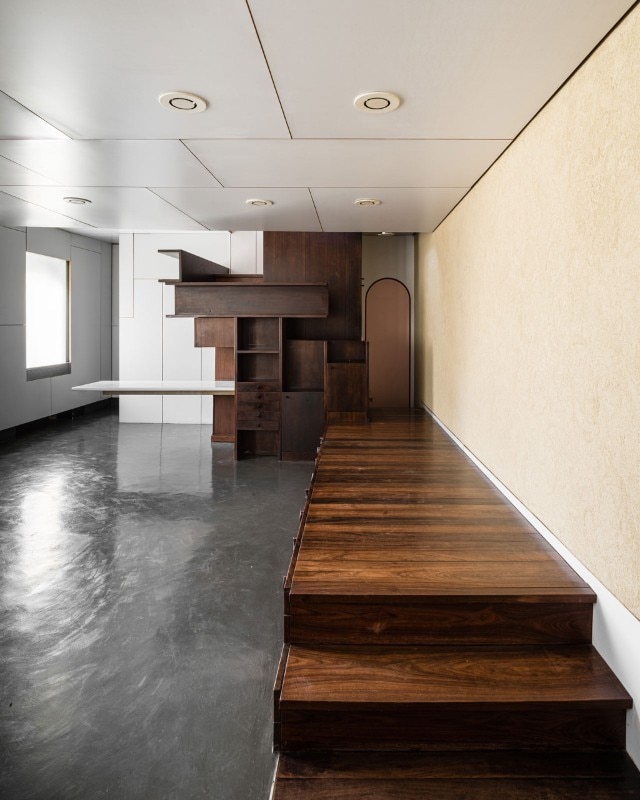
With the help of the “calm and bearded” [4] young Neapolitan architect Bruno Scagliola and the carpenter Giuseppe Baraldi, he transforms this attic, even though without intimacy and feelings, into a special place, “into a silent space above the cloud of naphtha, above the fog and the shadow of the city street, in which to sit legs crossed, eyes closed and thumbs close to the indexes, in order to meditate on yourself and on your own true position, while the waves of garbage keep crashing against time”[5].
The real protagonist of the project is the staircase that begins at the entrance and goes up to the bedroom, or more precisely, the relax room. The rosewood staircase also has built-in drawers to better organize the space: it is a real piece of furniture that turns into a storage unit with shelves and cabinets. Inside, there also is a little storage room and the counterweight of the marble dining table, which is supported by two cantilever shelves.
Apart from one wall on the higher floor, which was made in Holland (white marble chip plaster), the rest of the living room – along with the entrance door, the ceiling and the walls - is covered with a sophisticated system of white plastic laminate panels, while the floor is covered in brown felt. The library, near the entrance, was created by using the same type of panels and perforated laminates, the same that Sottsass uses for the windows and to cover the radiators. In the library, the grill is used to hide the loudspeakers of the magnetophone, the record player and the cable radio. These devices are inside the cabinet together with the discs and a storage compartment with clothes hangers.
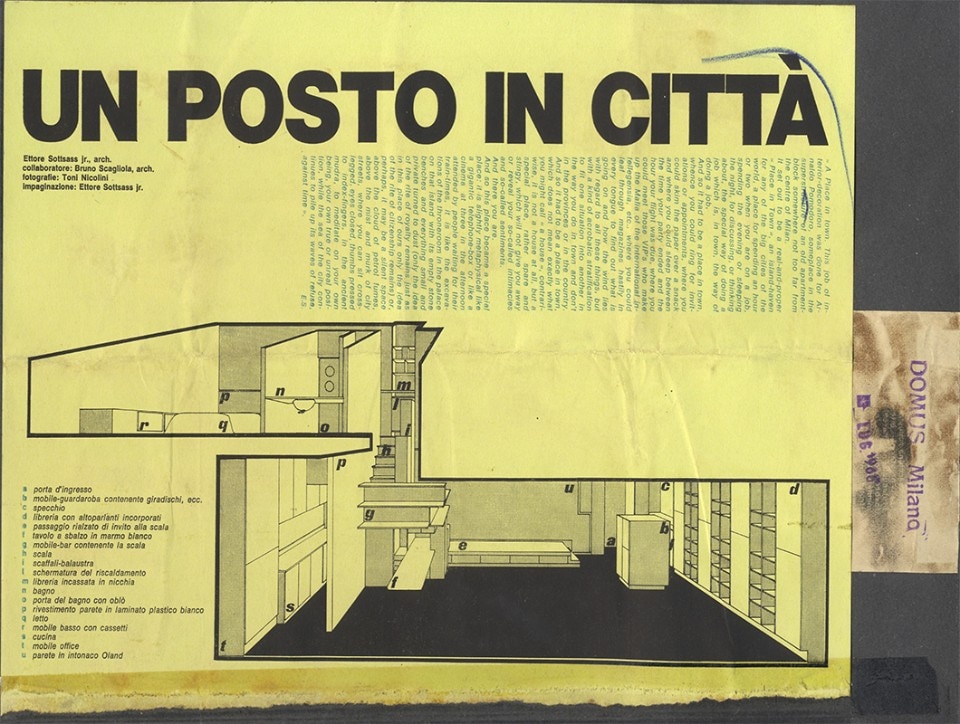
Sottsass found an interesting solution for the windows: to a traditional curtain, he preferred a frosted glass layer that slides behind the laminated plastic coating of the walls. As you climb up the sculpture-like staircase, you reach the bedroom, where you can still see the exposed ceiling trusses. Here, the architect played a little with colour, with the golden tile shelves designed to display objects, knickknacks and sculptures and with the small bookcase and a closet full of drawers that look like they belongs to the interiors an old pharmacy.
The bathroom, the only one in the house, is completely covered in white and grey granite. Sottsass says that he “removed from the house all the things that you think could germinate and he left it there, like the trees in winter, when they cut down all the branches and people gasp: “oh my, they killed them!”, but then, when spring comes, small green buds burst open in the most unthinkable places, and people say “damn, that’s crazy, it’s not really dead, the tree will be covered in leaves in no time”[5].
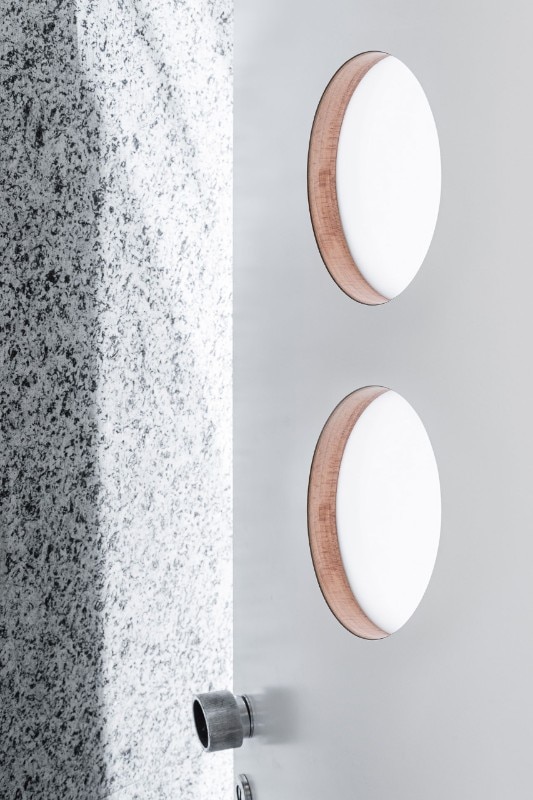
The solution chosen for Arnaldo Pomodoro would have been difficult to apply and adapt to the needs of any other person. Yet, fortunately, once the house was sold, the buyer of the property, a professional architect, had the good sense not to change it in any way. Due to a work commitment that forced him to leave the city, the architect put the attic up for sale, making sure to find a new owner who could deeply understandthe house.
So to date, the current tenant has preserved its original state, adapting it to her needs. She describes her life in this “place in the city”[6] as a life “on a boat”. In fact, the fact of having to climb up the furniture-sculpture-staircase to reach the bedroom, the portholes on the bathroom door and the size and heights of this space remind us of a naval and nautical design. The owner hired a local craftsman to repair and replace the damaged parts (the panels in particular had been deformed and bent). It was a difficult task: in order to change even one piece of the curtain wall system it was necessary to dismantle almost the entire structure, starting from the ceiling.
Pomodoro’s “dry and tight” environment [7], which came from the collaboration of two great men, has been overwhelmed by the warmth of the feelings of those who live in it, still without affecting its nature. And so, while we often find ourselves crying over the destruction, conversion and renovation of the works of many great architects, sometimes we are lucky enough to find precious gems, hidden in the upper floors of a building in the heart of Milan, where time seems to have stood still.
Sources and references: E. Sottsass Jr., Un posto in città, in Domus n. 464, July 1968, pp. 29-38.
E. Sottsass Jr., La casa metafisica di Arnaldo Pomodoro, in «Vogue Italia», April 1968, pp. 160-163.


